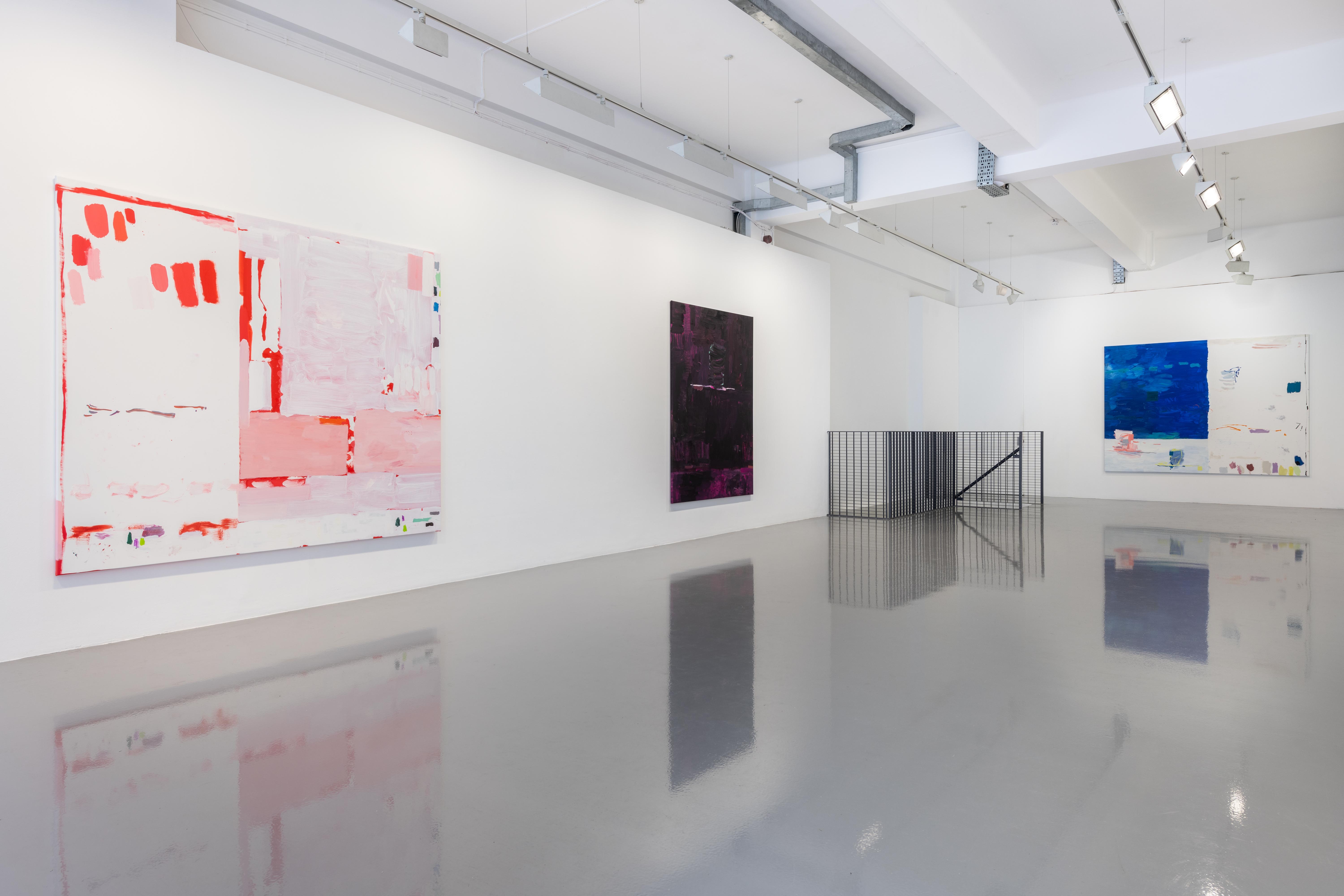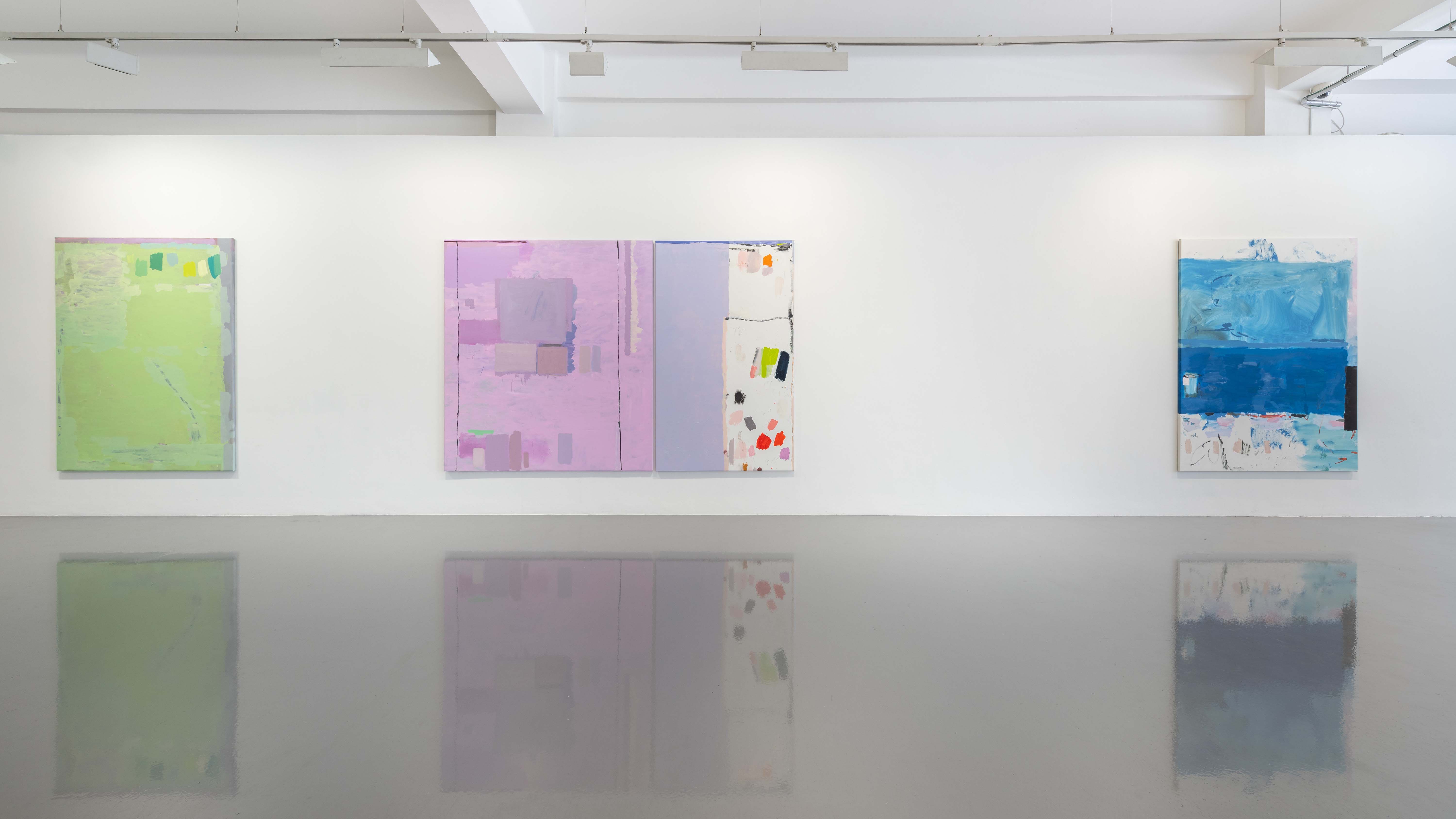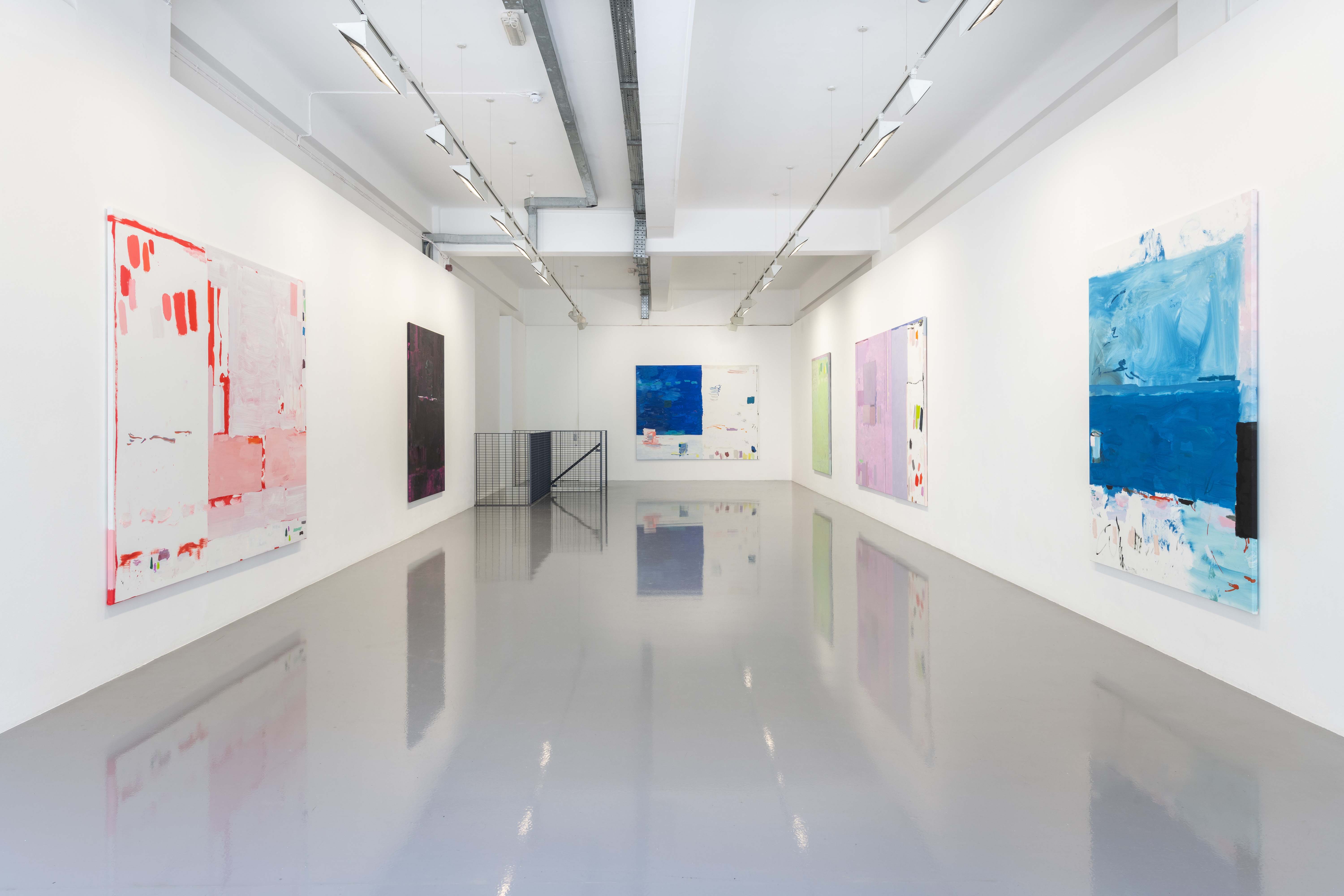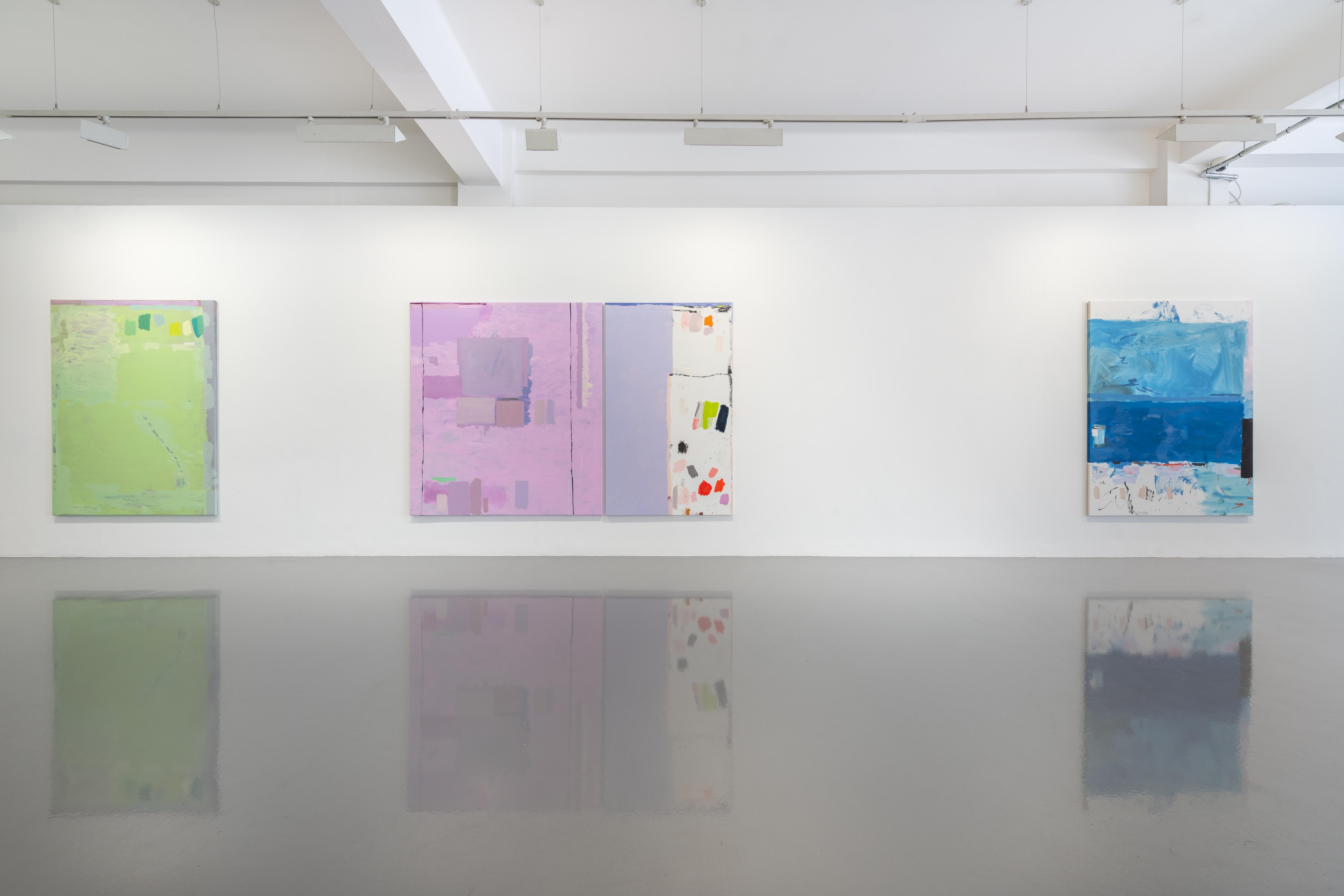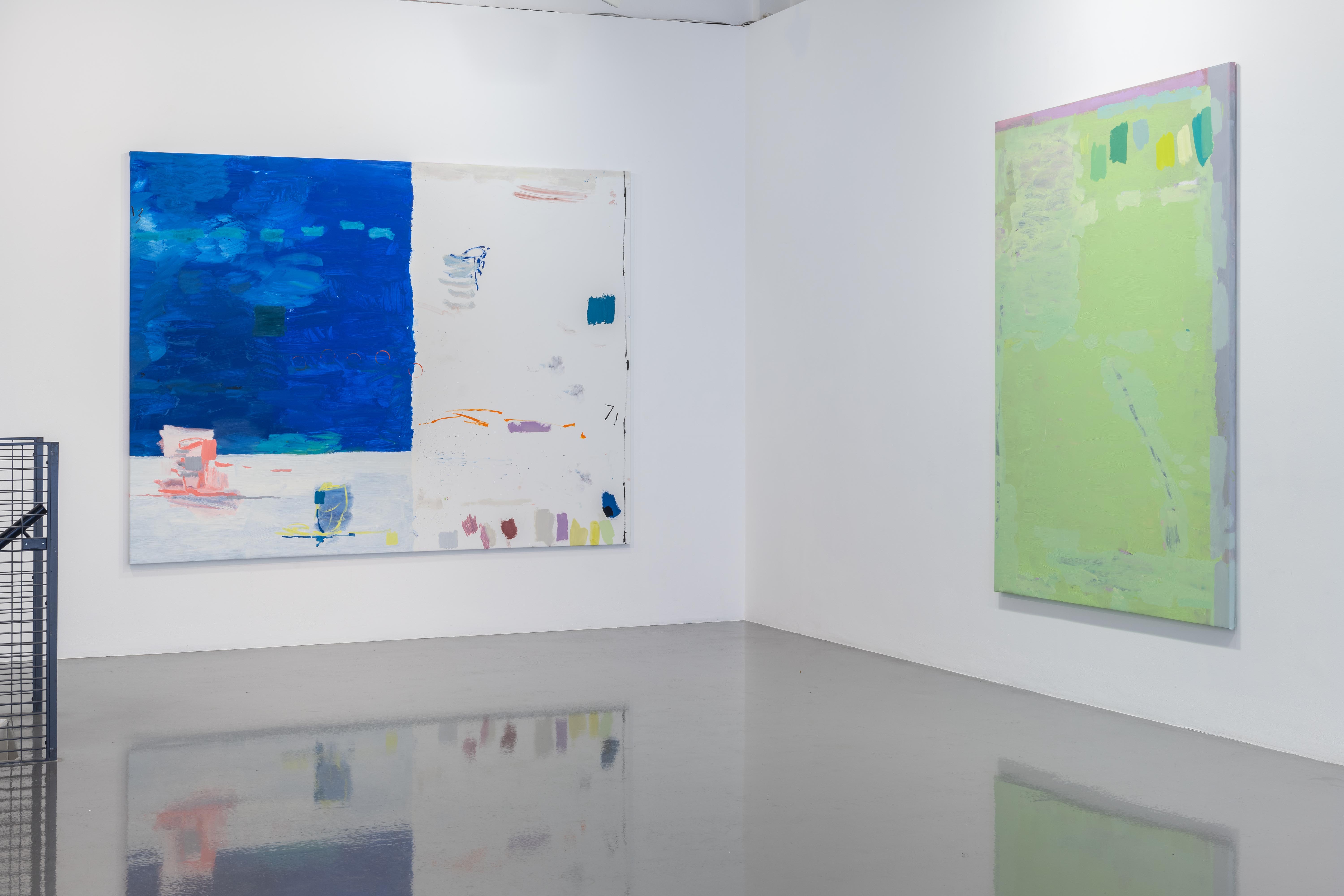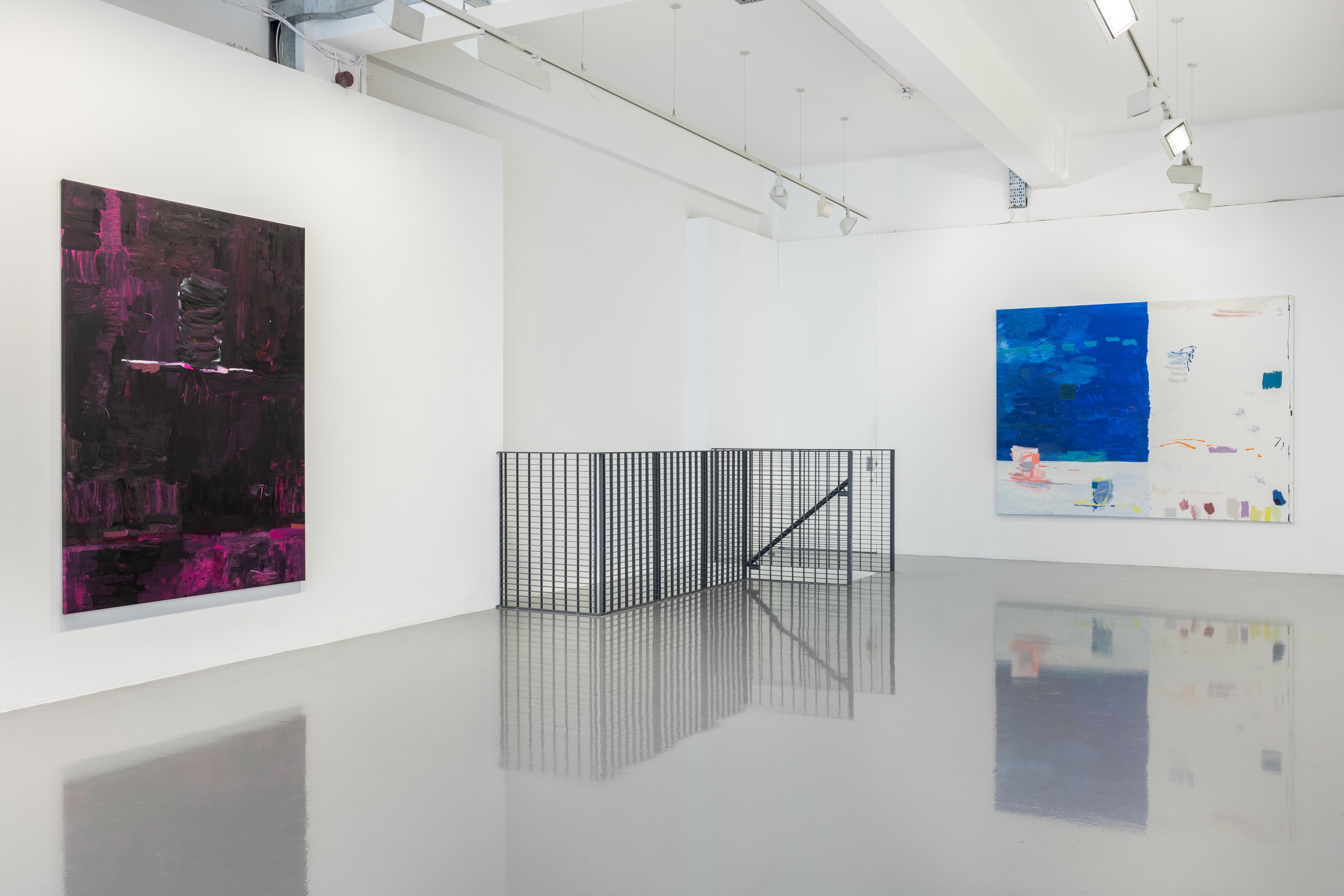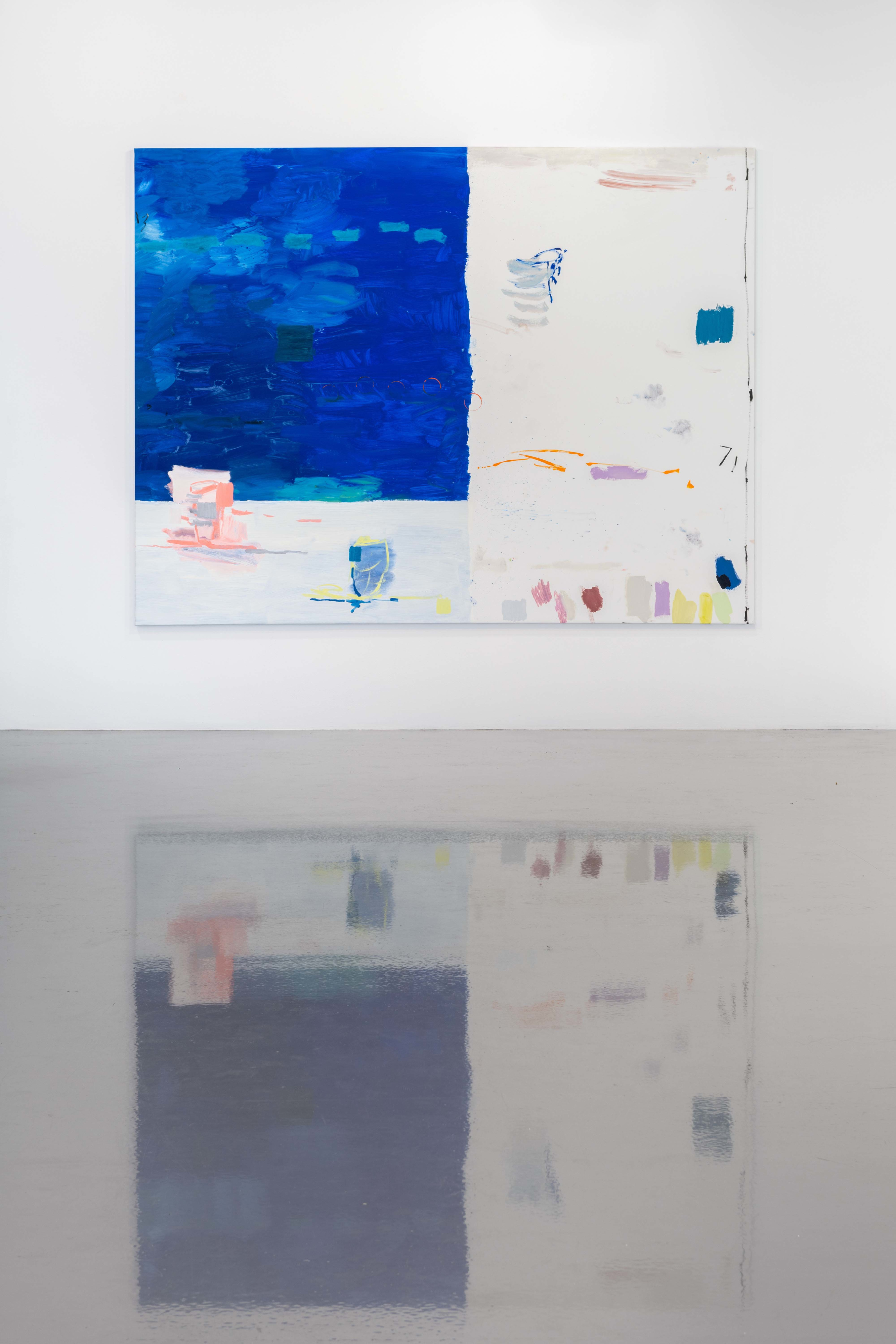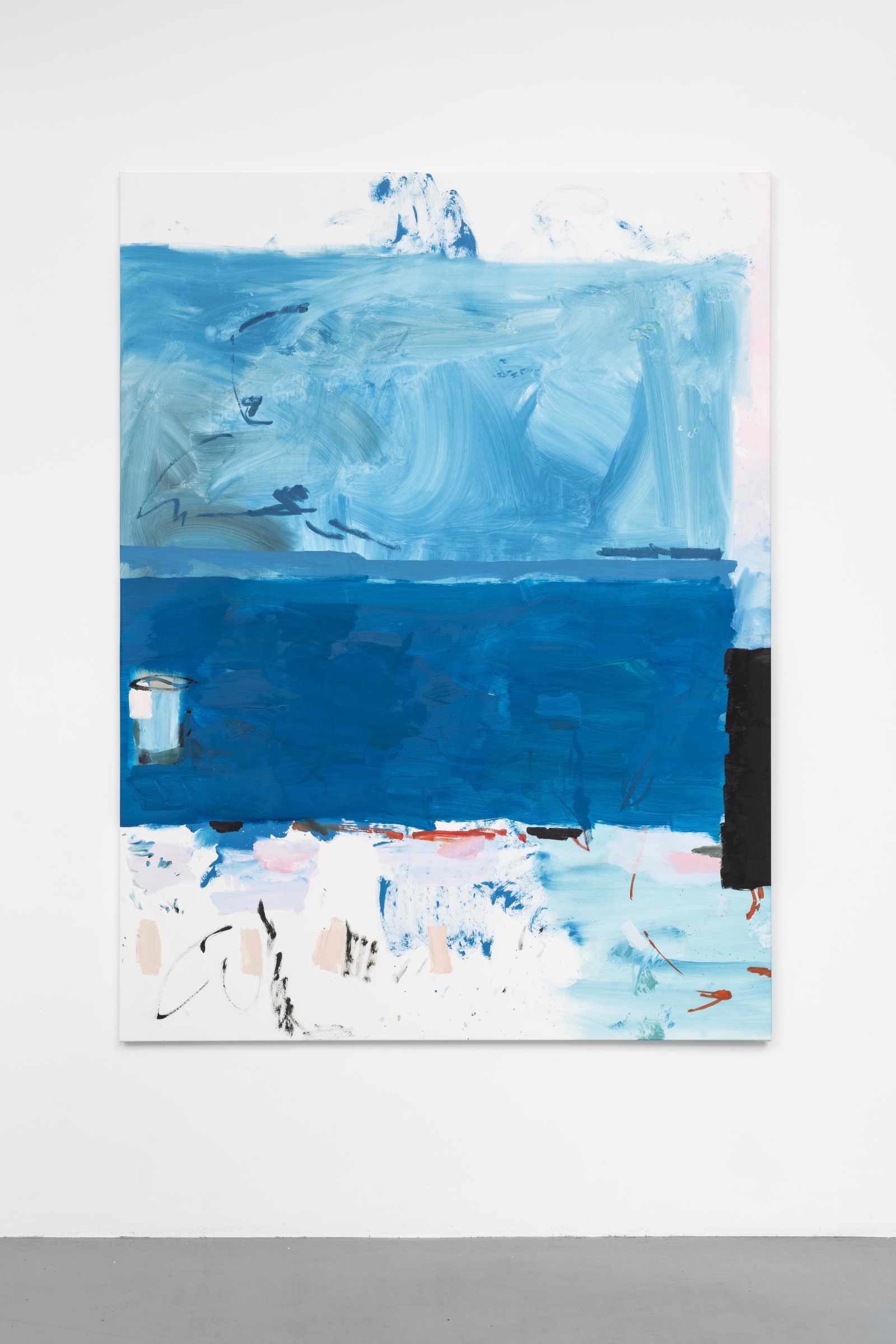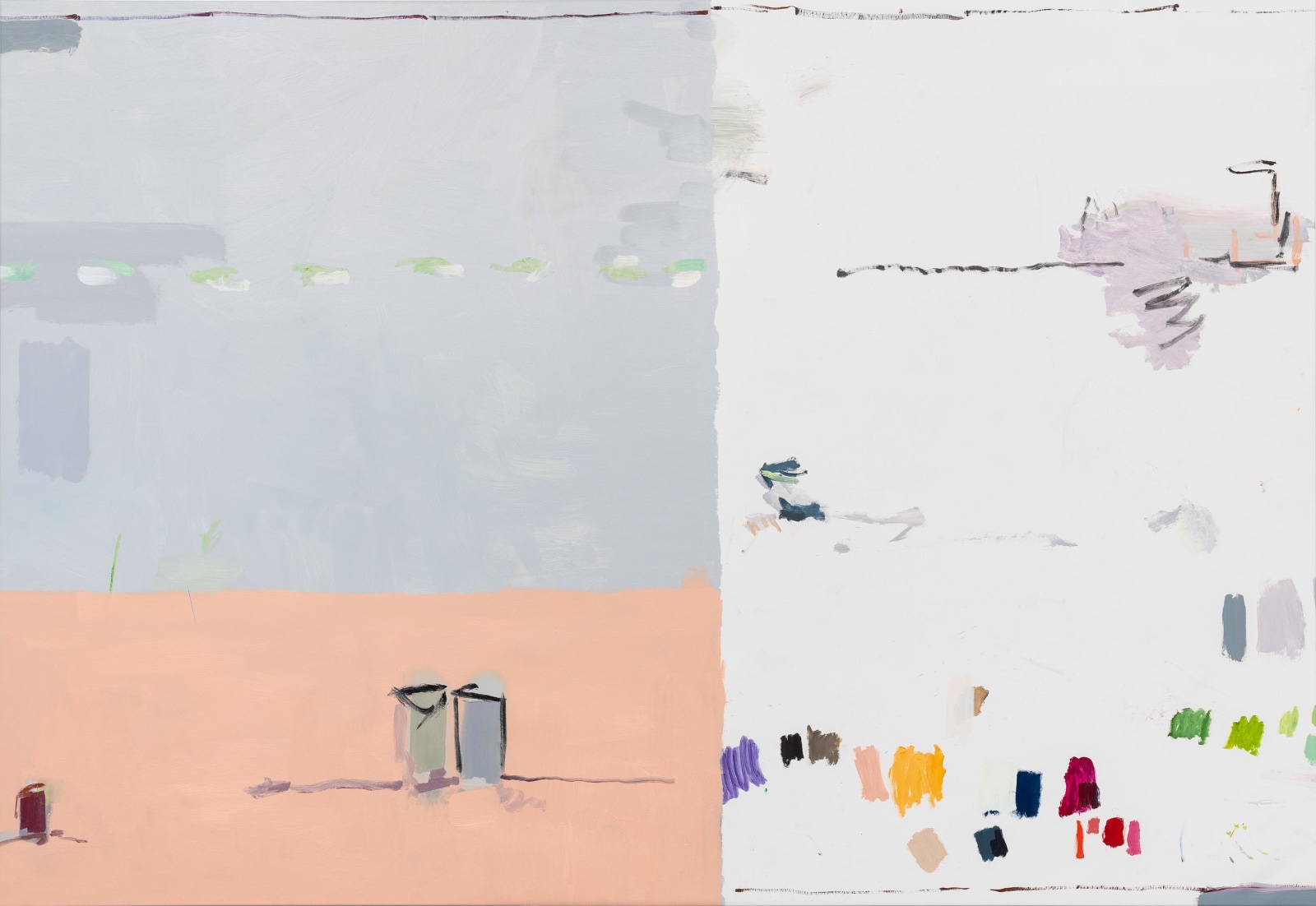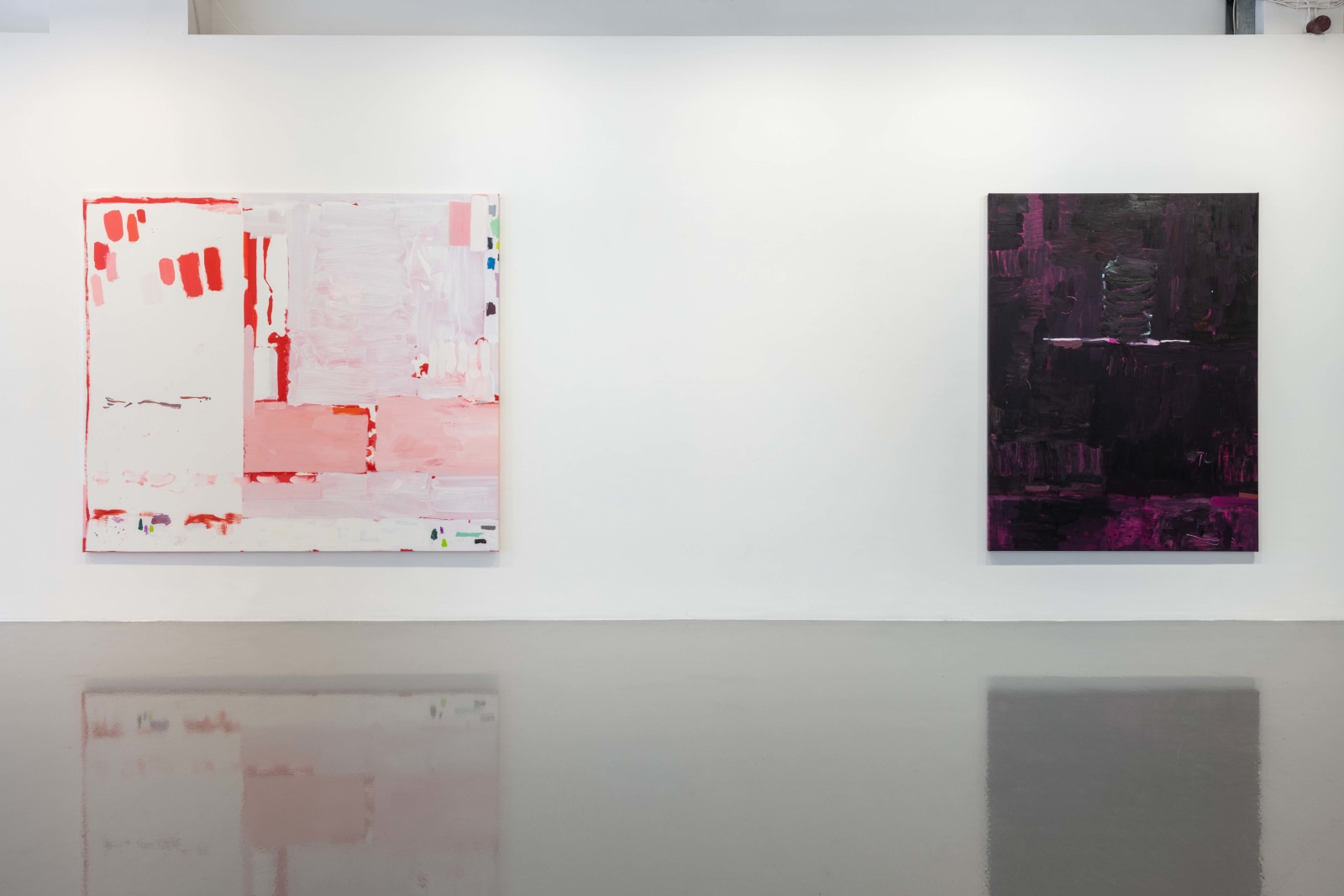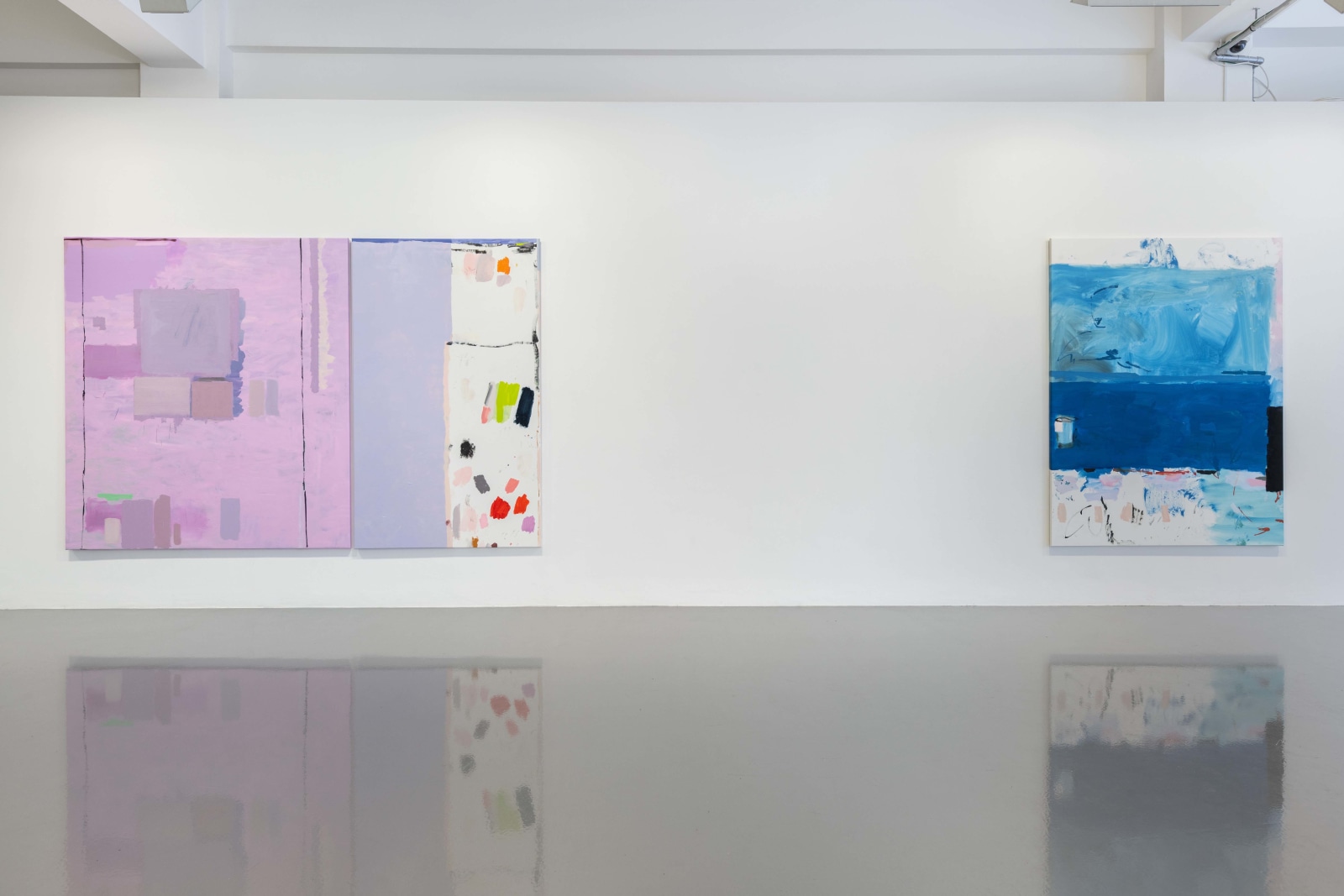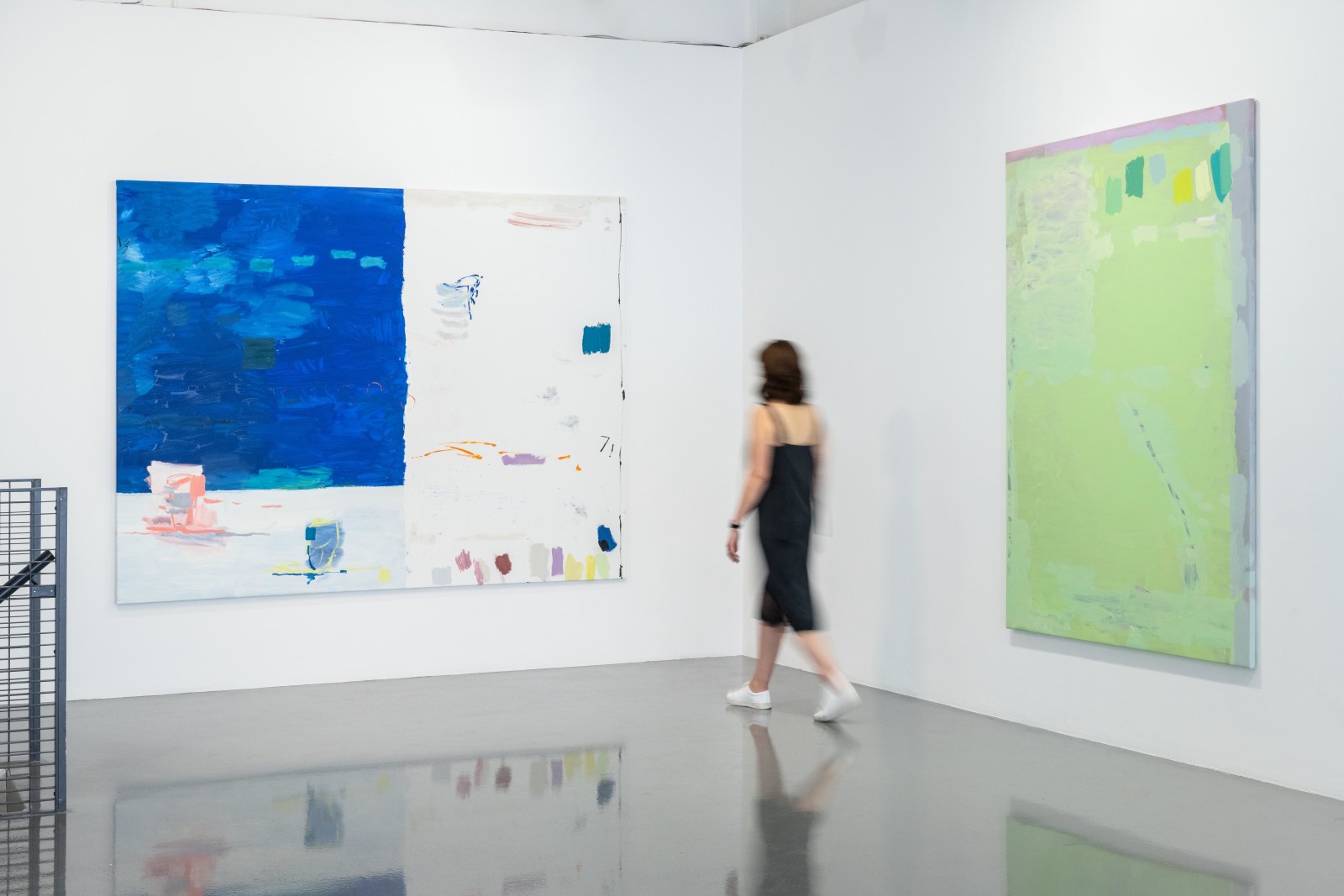Overview
Mary Ramsden's paintings are composed of basic but indefinable shapes, marks, fields of colour and material. They appear so stripped back, so apparently lacking in artifice, coruscating brushwork and elaborate composition that it would be easy for a casual viewer to dismiss them. However a closer look reveals that they are arrived at by a series of laborious experiments, of thinking and rethinking during the process of painting. This process is defined by an infinite series of decisions, the refusal and acceptance of chance, the vagaries of the eye in coordination with the hand and the conscious effort to resist representation and referentiality whilst acknowledging the impossibility of this. Their spontaneous and simple appearance is illusory. They are in fact a highly complex and tightly controlled sequence of actions and decisions. They are worked and reworked until after relentless scrutiny and repeated editing, only the most essential elements remain. Thick paint masks underpainting that pushes through the irregular thickness of the brushstrokes and is more clearly visible where it has been scraped back or just not applied. Tool marks, scuffs and scratches on the surfaces provide an accidental palette of ready-made marks. These accidents both caused and caught by the artist are integral to the image. They are truly unconscious, accidental marks alongside the intended and laboured.
For this new series of paintings the pure(r) abstraction of earlier works has been infiltrated to a degree by representation. Cryptic brushstrokes coalesce into cups or vessels, the divisions between the fields of colour become horizons in a landscape/seascape, windows looking out into the sky or bed sheets laid alongside and on top on of one and other. In these works Ramsden is engaging with two of the classical forms of painting, the still life and the landscape. The vessels inhabit a space demarcated by the horizon lines and linear rectangles create apertures suggesting interiors separated from the exterior world. Swatches of colour suggest a nod to the domestic but also disallow this straight-up reading as they fast become part of the formal concerns at play. This 'polite' domesticity is also at once undermined by the size of the canvases. They are monumental painted on a scale that is 1-1 if not larger than (still) life and it is here that the viewer discovers the third form in the trinity of traditional painting motifs. The figure, or at least evidence of its presence is apparent in the brushstrokes and the immense scale of these works makes the act of painting a physical action that requires the whole body rather than just the hand, the wrist and the eye. Ramsden has inhabited these spaces whilst creating them and the resulting paintings are the traces of her presence and the performance of their making.
Unfinished and yet resolved, these works bridge the labour gap between too much and not enough, embodying a series of contradictions - spontaneity vs control, intention vs accident, abstraction vs representation. They are at once a rigorous investigation of mark making and the materiality of paint and a deconstruction of the history of painting synthesised to create a distinctive and personal language as she explores the physicality of paint, the representational ambiguities of minimalist forms and painting's history in the search for something different.
Text by Dan Brown, Senior Curator of Contemporary Art at the National Galleries of Scotland.
Additional commissioned text in collaboration with Canadian writer and novelist Shelia Heiti.
Mary Ramsden lives and works in London. Her most recent exhibitions include: Blason, Sid Motion Gallery, London (2019); Surface Work, Victoria Miro, London (2018); Couples Therapy, Pilar Corrias, London (2017); You see me like a UFO, Marcelle Joseph Projects (2017); 31 Women, Breese Little (2017); (In / It), The Aspen Art Museum, Aspen (2016); Vanilla and Concrete, part of Tate Britain's relaunch of the Art Now series (2015); Swipe, Pilar Corrias, London (2015); I am here but you've gone, curated by Milovan Farronato with Stella Bottai, Fiorucci Art Trust, London (2015); Panda Sex, curated by Tom Morton, State of Concept, Athens (2014); New order II: British art today, Saatchi Gallery, London (2014); Consommé, Kinman, London (2013); Open Heart Surgery, The Moving Museum, London (2013); Temple Bar in Dublin (2012); and New Contemporaries, UK (2009).

